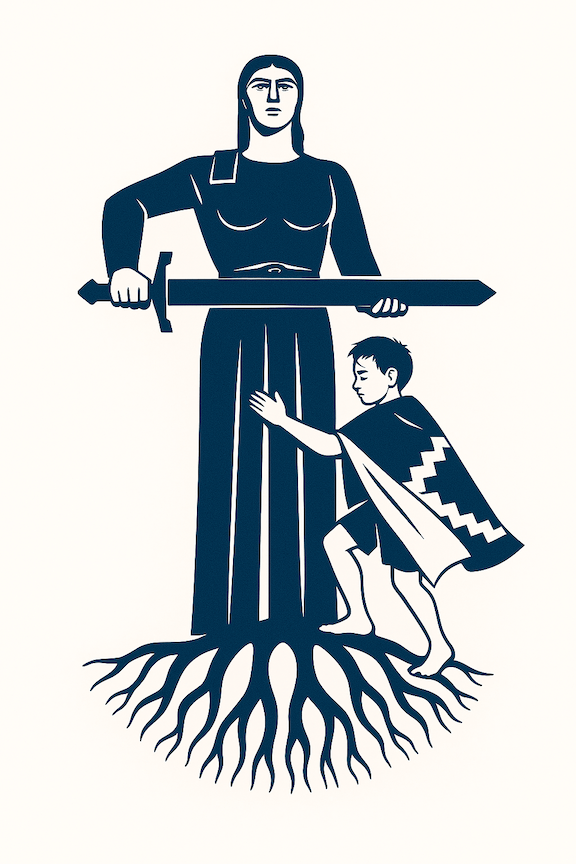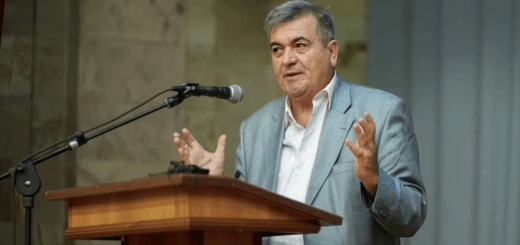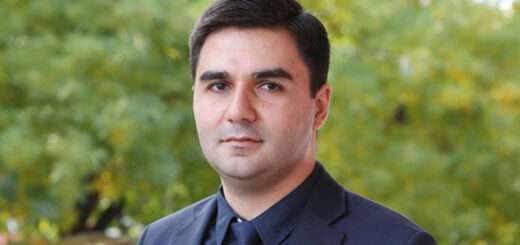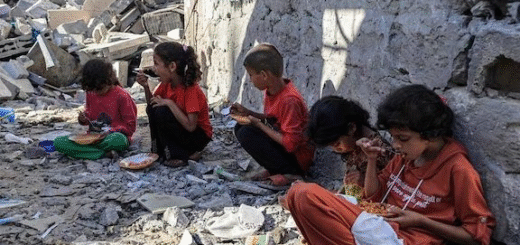Artsakh and the Right of Return: From Political Theater to Responsible Action

BY RAFFY ARDHALDJIAN
The Republic of Artsakh was proclaimed by the people of Nagorno-Karabakh on September 2, 1991. Thirty-four years later, the date continues to resonate, marked this year both by remembrance and by opposition rallies in Yerevan calling for a ‘return to Artsakh.’ These rallies reflect the nation’s enduring bond with Artsakh, even as the harder work of statecraft lies ahead.
For Armenians, the phrase “right of return” is not an abstraction: it recalls both the genocide of 1915 and the recent expulsion of the Armenians of Artsakh after the Azerbaijani offensive of September 2023. The legitimacy of that right is beyond question. What is in question is how the Armenian political mind should think about it today—through the lens of credible statecraft rather than political theater.
The right of return is deeply rooted in justice. Armenians, as a people who have endured genocide and exile, understand the painful meaning of forced displacement better than most. For some nationalists, “return and reunification” embodies a larger vision of restoring Armenian presence on ancestral lands (even though Armenia had rarely had a united territory since 368 CE. Armenia has been located all over the place, from Cilicia to the present day Armenia and many locations in between.
These views are understandable, even necessary in shaping a national ethos sometimes. Yet entitled legitimacy alone is not a political program. In today’s Armenian politics, the issue of return seems often manipulated—by foreign powers who remained silent during the ethnic cleansing, and by opposing domestic factions who use it as a test for patriotism in pre-election positioning.
A major flaw in this discourse is the rigid binary frame that equates support for return with advocating war, and opposition for return with a surrender for peace. This reductionism has long plagued Armenian political thinking. For three decades, the question of Artsakh was cast mostly as “war or peace,” while other vital dimensions were neglected: strengthening Armenia’s defenses, investing in economic development, return of people of NK who left the territory under periods of duress or persecution or adjusting to changing regional geopolitics. Azerbaijan did precisely this, building capacity in many domains while Armenian leaders outsourced security, maintained maximalism & argued over slogans. Today, responsible statecraft requires aligning Armenia’s objectives with its own means, rather than reducing national strategy to false binaries.
While opposition rallies in Yerevan keep the Artsakh question on the national agenda, Armenians today lack a ‘magic wand’ to secure the collective return of Artsakh refugees under international guarantees. Any serious strategy will demand time, focus, and resources. Meanwhile, the populist ruling party clings to the illusion of peace through submissive acceptance of the fait accompli, while at home fostering a negative—whether conscious or unconscious—narrative against vulnerable refugees. Both approaches remain politics-driven, not grounded in the realities the situation demands.
The world of 2025 is multipolar, fragmented, and highly competitive. Since the San Stefano treaty of 1878, a mindset of expecting salvation of “Christian Armenians” from great powers has lingered, but the international system is anarchic, as John Mearsheimer reminds us and as we have been witnessing: there are no saviors. For a sovereign Armenia, statecraft cannot be outsourced, and no one will safeguard its interests except Armenians themselves. History, especially over the past two centuries, reinforces this lesson. When political organizations everywhere favor impossible dreams, they are guaranteeing that they will not be pressed to find step by step ways of improving a situation.
September 2nd seemed the central milestone in Armenian politics this week, though it is also important to recall August 26th, the Battle of Manzikert in 1071, which marked the beginning of centuries of Turkish domination in the Armenian highlands. A friend recently reminded me that out of three thousand years of recorded Armenian history, the last thousand have been spent sharing this geography with Turkic peoples. Romantic nationalism had its place throughout the world in the 1800s, but today’s realism demands acknowledging the limits of our geography. Armenia’s strategic thinking must be grounded in its actual neighborhood with Russia, Turkey, Iran, Georgia, and Azerbaijan, not in nostalgic visions of past glories. It is through this realist lens that the Armenian political mind can begin to make sense of the geopolitical maze and the competing claims about the state’s strategic interests.
The question then becomes: what should be the right objectives regarding Artsakh today? The answer begins not in abstraction but with people, specifically the more than 120,000 Armenians expelled from their homes. The existential plight of the Artsakh Armenians today is one of survival and of remaining within Armenia itself. Their condition is the concrete expression of the right of return.
While their ancestral homeland is currently inaccessible, ensuring their integration into Armenian society with cultural continuity is both a humanitarian imperative and essential to keeping the cause of Artsakh alive. Armenia has a demographic problem, and needs human capital. Preventing the emigration of Artsakh refugees is paramount and a race against time. Providing dignity and stable lives in Armenia today preserves the possibility of return tomorrow, should circumstances shift. I have previously written about this in Aztag Daily (Ճգնաժամային Պահը՝
In practical terms, instead of indulging in political theater, the immediate objectives for addressing the Artsakh question today can be outlined as follows:
- Provide adequate housing, schooling, healthcare, and employment through effective, institutional, and consistent measures;
- Facilitate community building that sustains Artsakh’s cultural continuity and offers emotional support;
- Encourage the majority of refugees to take up Armenian citizenship (only a small percentage have done so thus far, for various reasons).
It is worth noting that although most Artsakh refugees already held Armenian passports ending with the 007 series, they were subsequently issued ‘temporary protection refugee certificates,’ which many in Armenia view as somewhat restrictive. Both the government and the opposition have remained ambiguous on the citizenship issue. These refugee certificates granted limited financial compensation for a while, but most payments appear to have been halted as of August 2025, with the remaining benefits for retirees and youth expected to expire by year’s end. By contrast, full Armenian citizenship entitles refugees to one-time housing vouchers—a measure particularly meaningful for larger families and for those settling outside Yerevan, where real estate remains more affordable.
One would think that the Armenian state and the Diaspora together would have the means to pursue the goal of settling Artsakh refugees in Armenia proper today. If the political will exists and convincing plans are developed, other nations could also be enlisted to help. One would also expect that Artsakh refugees taking up Armenian citizenship—rather than being lured by immigration programs of other countries seeking human capital—would be the right course. Responding to this crisis is not only a humanitarian duty but also a test of Armenian statecraft. Only then will the people of Nagorno-Karabakh stop seeking remedies abroad.
I want to end with lessons I have observed from others. Each summer I visit Thessaloniki, Greece, where my grandfather was once a refugee after the Genocide. I pass through many towns whose names begin with ‘Nea,’ referring to the new communities built by Greek refugees expelled from Anatolia in 1922 after Greece’s defeat and the expulsion of Greeks and Armenians from Anatolia. The third generation in these towns preserved memory while building new lives, ensuring the continuity of Greek civilization.
The Greek people never forgot the political and military failures of their leaders; many were tried in the ‘Trial of the Six’ of November 1922, and some executed for the Asia Minor Catastrophe that expelled about 1.2 million Greeks from their native Anatolia for believing in the Treaty of Sèvres and pursuing the Megáli Idéa (Μεγάλη Ιδέα)” of agreater Greece. The subsequent population exchange with Turkey and the 1923 Treaty of Lausanne effectively ended the Megáli Idéa as an active Greek policy. Armenians face a similar choice today: to let memory become paralysis, or to use it as the foundation for renewal, and to engage in statecraft worthy of a sovereign nation.
The right of return is a legitimate and deeply painful concern. Yet justice sought without strategy becomes a hollow endeavor, and Armenians have grown weary of such emptiness. Even more troubling is the political apathy that has settled in since the disastrous war of 2020 and its continuing consequences. If Armenia is to move beyond crisis, the national conversation must shift from political theater to responsible and realist statecraft. That requires defining objectives that can be matched with the means to achieve them. A responsible political actor addressing the Karabakh issue will begin with the most urgent task: caring for the refugees of Artsakh, while strengthening the Armenian state and resisting the manipulation of national discourse by opportunists and outsiders alike.
Since the ruling party has chosen to ignore such goals, it falls to the opposition and wider civic forces to create credible alternatives. Only by unifying around practical objectives and assuming real agency can we move beyond the paralysis of 2020 and subsequent Artsakh catastrophe and chart a path toward a more secure and sovereign future. The rights of the Artsakh Armenians require the political will to meet the responsibilities of today, while keeping the long strategy in sight and preparing for tomorrow under the most favorable conditions.
The path forward requires connecting the dots between our current situation and our intended destination. It does not call for hollow slogans, but above all the real promise of housing, jobs, community, and citizenship for our Artsakh refugee compatriots—in Armenia, now.
Raffy Ardhaldjian is a Fletcher School graduate and advisor to tech companies, public institutions, and NGOs. In his spare time, he writes about strategic topics spanning Armenia and the Armenian diaspora.





